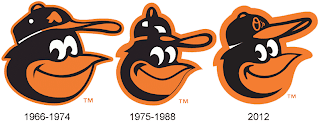Just last week, WWE's flagship television program RAW aired its 1000th episode, and it featured some nostalgic, shocking and unforgettable moments filled in three hours of heart-stopping wrestling action.
 RAW debuted on the USA Network on January 11, 1993 at the Grand Ballroom in Manhattan, New York City. 19 years and 1000 episodes later, it emanated from the Scottrade Center in St. Louis, Missouri. Vince McMahon, the creator of RAW, opened the show and thanked the fans and the viewers for helping the show become what it is today. The next segment saw D-Generation X reunite, not as the most recent tag team of Triple H and Shawn Michaels, but as a stable that was popular in the late 1990s. In addition to Triple H and HBK, Road Dogg and Billy Gunn of the New Age Outlaws, and X-Pac joined them for a one-night reunion. After a brief interruption by Damien Sandow, a 'Sweet Chin Music' and 'Pedigree' combination finished off Sandow, after which DX celebrated in front of the crowd.
RAW debuted on the USA Network on January 11, 1993 at the Grand Ballroom in Manhattan, New York City. 19 years and 1000 episodes later, it emanated from the Scottrade Center in St. Louis, Missouri. Vince McMahon, the creator of RAW, opened the show and thanked the fans and the viewers for helping the show become what it is today. The next segment saw D-Generation X reunite, not as the most recent tag team of Triple H and Shawn Michaels, but as a stable that was popular in the late 1990s. In addition to Triple H and HBK, Road Dogg and Billy Gunn of the New Age Outlaws, and X-Pac joined them for a one-night reunion. After a brief interruption by Damien Sandow, a 'Sweet Chin Music' and 'Pedigree' combination finished off Sandow, after which DX celebrated in front of the crowd.
Triple H later returned to cut a promo on the possible SummerSlam match against Brock Lesnar. For a while, it looked as though Paul Heyman, Lesnar's representative, would refuse again, but after a slap by Triple H's wife Stephanie McMahon, Heyman then accepted the match, after which Lesnar appeared for a staredown.
Other legends would appear throughout the episode, including The Undertaker, who reunited with fictional brother Kane as the Brothers of Destruction to fend off an attack by Jinder Mahal, Tyler Reks and Curt Hawkins, Camacho and Hunico, and Drew McIntyre. In addition, Ron 'Farrooq' Simmons and John 'Bradshaw' Layfield reunited as the APA, helping Lita defeat Heath Slater, who had a run-in with WWE legends recently. Other legends, such as Bret Hart, Mick Foley, Roddy Piper and Me Young, made brief appearances.
A new general manager was also named, as AJ was hired to the position. This happened in the midst of her 'wedding' with 'beau' Daniel Bryan. Later, The Rock arrived to a standing ovation, and then declared his intention to challenge the WWE Champion at the 2013 Royal Rumble, much to the dismay of Bryan and CM Punk.
The Miz would defeat Christian for the Intercontinental Championship, while Sheamus, Rey Mysterio and Sin Cara defeated Dolph Ziggler, Alberto Del Rio and Chris Jericho in a six-man tag team match.
In the main event, John Cena cashed in his Money in the Bank briefcase against WWE Champion CM Punk. Unfortunately, The Big Show interfered, causing a disqualification. The Rock would help Cena, but was ultimately attacked by Punk before he was finished with the 'Go to Sleep' and mocked in front of a stunned audience to end the show.
With episode 1000 in the books, what else is in store for the next 1000? Check us back for the next 1000 or so.






